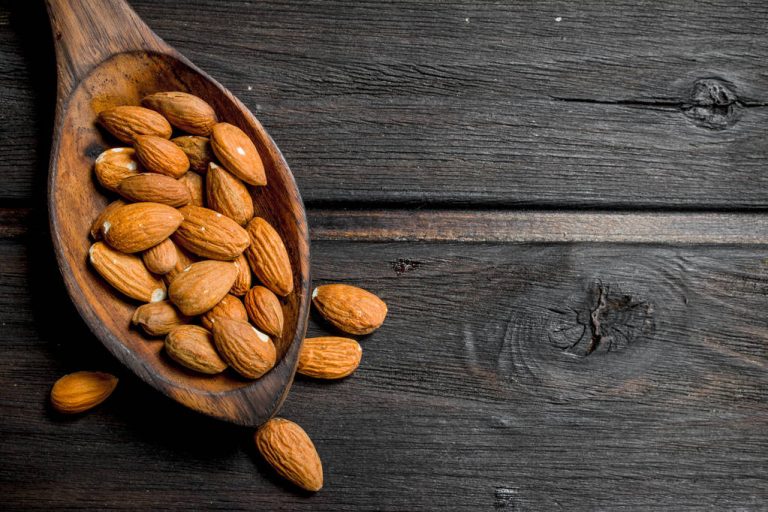Many foods that most of us have at home are actually toxic – especially when raw. Here are seven toxic foods we still eat regularly.
bitter almonds

Almonds are a popular baking ingredient that packs a punch: Even five to ten raw bitter almonds can lead to fatal poisoning in children. This is because the amygdalin contained in the almonds is converted into toxic hydrocyanic acid in our body. Bitter almonds are usually only available in pharmacies, but it can happen that one of them is accidentally mixed with sweet almonds* in the supermarket. The problem: the almonds are visually indistinguishable.
But the all-clear is sound, because the poisonous bitter almonds don’t get their name by accident. And their bitter taste usually prevents you from eating more than one of them.
potatoes
Potatoes are actually a poisonous food. The reason for this is the solanine contained in the tubers. Solanine serves to kill rotting pathogens and thus protect the plant. The good thing is that most of the solanine is destroyed when the potatoes are cooked, making them safe for us. However, potatoes with green spots or sprouts should no longer be eaten, as this is where a particularly large amount of solanine is formed
Symptoms of poisoning with solanine range from headaches, vomiting, diarrhea or sore throats to severe poisoning that can be fatal. Older potatoes should therefore always be peeled.
cashew nuts
Cashew nuts are a popular and particularly healthy snack. But they are also poisonous in their original – uncooked – form, because they contain urushiol, a poison that can trigger strong reactions just by touching them. Fortunately, the poison is destroyed by heating, so the mostly roasted cashew nuts* from the supermarket are harmless.
By the way: The cashew nuts are often counted among the nuts. From a botanical point of view, however, they are not nuts at all, but the kernels of the cashew apple.
rhubarb
Rhubarb can also be poisonous. Because rhubarb contains the toxic oxalic acid, most of it in the leaves. If these are removed, the danger is manageable. In general, the more acidic the rhubarb, the more poisonous it is.
Green beans
Green beans actually sound very harmless and healthy. However, these are raw (just like almonds) only very limited edible. They also contain a toxin that is destroyed by heat: lectin phaseolin. In children, eating more than six green beans, for example from the garden, can lead to severe poisoning and even death. So be sure to enjoy the protein bombs cooked!
kidney beans
Kidney beans are also poisonous when raw. They contain the toxin phytohaemagglutinin, which is only destroyed by cooking. Caution: When cooking kidney beans, make sure that the water is really boiling and not just heated, otherwise there is a risk of poisoning and gastrointestinal problems.
manioc

When raw, manioc contains cyanide – i.e. hydrocyanic acid! And it’s highly toxic. That’s why you should never eat cassava raw. The cassava root comes from South America, but is now eaten all over the world. They can be peeled and chopped up, boiled in salted water and mashed – the result is a slightly sweet mashed potato. Manioc (also called “yuca”) also scores with many nutrients and vitamins, such as vitamin K. At the same time, the tuber is rich in starch – and calories.
Externally, cassava resembles a sweet potato, but has absolutely nothing to do with it.

